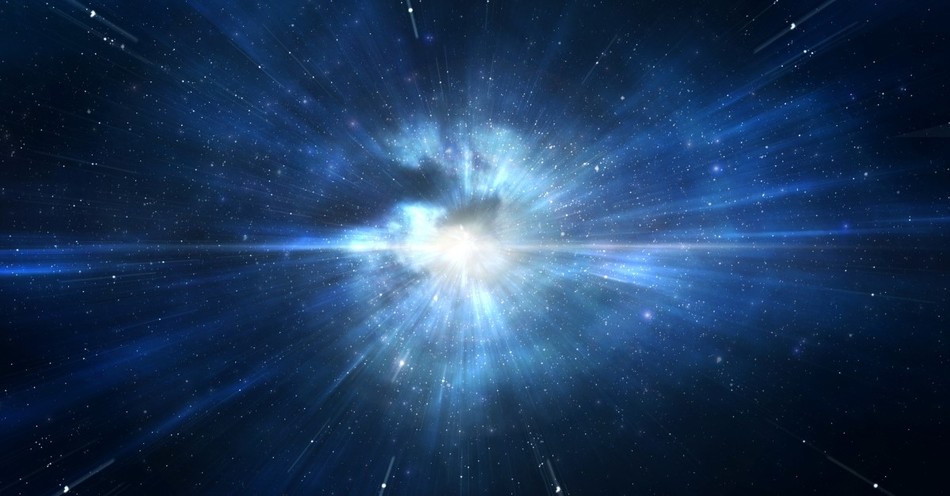[Editor's note: Taken from Who Made God? , chap. 7 "Starting with a Bang," written by Professor Edgar H. Andrews, published by EP Books, Darlington, England © 2009.]
Read part 1 of this article series here.
Evaluating the Big Bang
From Einstein in 1915 to Penzias and Wilson in 1963 is less than fifty years, but this period saw a revolution in man's perception of the cosmos. Scientists were at last convinced that the universe had a beginning, just as the book of Genesis had always said. But ever since this unavoidable conclusion was reached, there have been tireless efforts to avoid it! I examine some of these evasive strategies in chapter eight of Who Made God?
But we need to understand just what is implied by big bang cosmology. First, a note of caution is needed. The big bang or ‘standard model' of the universe is just that — a scientific model. It is a scenario reached by extrapolating back in time the current observation that space is expanding and is uniformly bathed in a background of microwave radiation — consistent with an original enormously hot condensed universe. The scenario also represents one solution of the equations of general relativity theory. It is thus a highly convincing picture but it remains a model that might not, in the end, correspond to reality. A particular problem is that to explain both the shape and the extreme uniformity of the universe, theoreticians have had to introduce the idea that (in its initial stages) the universe ‘inflated' from nothing to one metre in diameter in a period of 10-35 seconds (ten to the power of minus 35) — a speed of 1035 m/sec which is a trifling 1027 (ten followed by 27 zeros) times faster than the speed of light. That's a billion billion billion times faster that the fastest thing we know. However, at present, some kind of ‘hot big bang' offers the only scenario for the origin of the cosmos that is based on experimental evidence and which therefore constitutes science as distinct from mathematical and philosophical speculation.
Secondly, we need to understand that the big bang was not some kind of cosmic-scale explosion in space. If it had been, the universe would be expanding away from some central point at which the explosion occurred — and that point would have to be Earth itself because it is from Earth that we observe a universe expanding equally in all directions. Yet there is no scientific or theological reason to think that the Earth is the physical centre of the universe, and I know no one who suggests that it is.
I once acted as an expert witness in a lawsuit in Helena, Montana. A railway company had carelessly allowed a freight car full of explosives to detonate, inflicting considerable damage on the town, including the cathedral. Its ‘marble' pillars had suffered serious cracking and it was my task to show that this could plausibly be attributed to deflection of the building caused by the explosion. This proved to be quite complicated because explosions are funny things and the blast doesn't usually travel equally in all directions from the epicentre. But the consequences attributed to the big bang are amazingly ‘isotropic', that is, they are precisely the same in all directions, as witnessed by the red shift and the uniformity of the microwave background radiation. Not your typical explosion, then.
The final nail in the coffin for the idea that the big bang was an explosion in pre-existing space is the fact that if it were, the most distant galaxies would be receding from us at a speed greater than the speed of light. But that cannot be, because this is forbidden by the special theory of relativity, which says that nothing can travel through space faster than light. The resolution of these assorted dilemmas is built into all the big-bang theories. The expansion of the universe we observe is not the flight of galaxies through space, but an expansion of space itself. This is not an easy idea to grasp, so let's make it simple.
Take a round toy balloon and begin to blow it up. The two-dimensional surface of the balloon represents the three dimensions of space (this means of course that nothing else about the balloon, like the centre of its spherical shape, has any meaning. The surface represents everything there is). Next, attach small circular stickers all over the balloon's surface to represent galaxies, and continue to inflate the balloon. What happens? As the balloon grows in size, the stickers move away from one another uniformly in all directions. If you were a bug sitting on a sticker you would see exactly the same thing whichever sticker you were on — all the other stickers would be receding from you equally in all directions. What is more, the further away a sticker is, the faster it will move away from you. A green sticker that was originally two inches away recedes at twice the speed of a red sticker that started out only one inch away. As the surface area of the balloon (representing the volume of space) increases, so the stickers (representing galaxies) move relative to one another in precisely the way galaxies actually do move in the expanding universe. This also solves the problem of the rapid recession of distant galaxies. Relativity theory only forbids faster-than-light movement through space; it has no problem with space itself expanding faster than light!
What our balloon model cannot picture is the actual beginning itself. For this you have to imagine travelling back in time so that the balloon shrinks and shrinks while retaining its spherical shape and curved surface. Eventually, of course, the balloon will vanish to a point and the stickers will all gel into a single mass. In actual big bang cosmology this means that, going back in time, all the matter and energy in the universe gets squeezed together into a pinhead — a process that would make it very, very, very hot. This is why the origin of the universe is often referred to as the ‘hot big bang'.
But what lies outside the expanding cosmic space? The answer is truly ‘nothing'. Everything that exists materially is contained within the expanding volume of space itself. There isn't even a vacuum or a void outside of space — just nothing at all. And if the big bang theory is correct, and the universe (and space itself) began as an infinitely small, infinitely hot pinhead, then there was at first an awful lot of nothing and not much something (in fact, none). This, of course, is exactly what the biblical hypothesis of God leads us to expect, namely, that creation occurred ex nihilo — out of nothing.
In concluding, let me say this. The first chapter of Genesis can be interpreted in a number of ways. Personally, I believe it records genuine history. Perhaps we should call it pre-history, to avoid confusion with human history or geological history, but either way I believe that the events described there actually took place. Clearly, as regards the statement, ‘In the beginning God created the heavens and the earth', this is in full accord with current scientific beliefs in a big bang origin for the universe. The language of Genesis, though poetical in style, is clearly historical in intent — an epic poem, if you like.
Unlike some, I have never had any problem reconciling a historical view of Genesis with the big bang theory, and I set out just such a scenario in my 1978 book From nothing to nature.12 Briefly rehearsed, this scenario is that the ex nihilo creation of the universe is reported in verse one of Genesis 1 — ‘In the beginning God created the heavens and the earth' — with no reference to how long ago that happened. I also regard the order as significant, the heavens being mentioned (and thus created) before the earth. From verse 2 onwards, the account concentrates squarely on the earth itself, which was at first covered with water. As the waters separated into clouds above the firmament (sky) and liquid water on the earth's surface (the waters under the firmament) the earth was bathed in light from the sun — light that was ‘separated' from darkness because only half the globe was illuminated, just as today. As the sky cleared, the heavens became visible from an earthly perspective and the heavenly bodies (having already been created) were ‘set' or placed in the sky — a classic use of phenomenological language describing what would have been seen by an observer on earth had anyone been there to see it. Understood in this way, the Genesis account of creation is fully compatible with the big bang theory and, indeed, predicts some such creation scenario.
[Editor's note: Taken from Who Made God? , chap. 7 "Starting with a Bang," written by Professor Edgar H. Andrews, published by EP Books, Darlington, England © 2009.]
(Article first published August 5, 2010)
If you enjoyed this article, you might enjoy receiving email newsletters like Christianity.com Foundations Weekly, a select assortment of thought-provoking articles on the foundational principles of the Christian Faith. Sign up here.
Professor Edgar H. Andrews (BSc, PhD, DSc, FInstP, FIMMM, CEng, CPhys.) is Emeritus Professor of Materials at the University of London and an international expert on the science of large molecules. In 1967 he set up the Department of Materials at Queen Mary College, University of London, and served both as its Head and later as Dean of Engineering. He has published well over 100 scientific research papers and books, together with two Bible Commentaries and various works on science and religion and on theology. His book From Nothing to Nature has been translated into ten languages.
Edgar Andrews was an international consultant to the Dow Chemical Company (USA) for over thirty years and to the 3M Company (USA) for twenty years. He was a non-executive director of Denbyware PLC throughout the 1970s and for five years a member of the Scientific Advisory Board of Neste Oy, the national oil company of Finland. He also acted for many years as an expert scientific witness in a variety of cases in the British High Court and in courts in USA and Canada.
In September 1972 he was one of four specially invited speakers at the dedication symposium of the Michigan Molecular Institute, two of the others being Nobel Laureates Paul Flory and Melvin Calvin.
For more information about Dr. Andrews and the book Who Made God?, read this interview with Alex Crain or visit his website, https://www.whomadegod.org/.
Click to purchase Who Made God?, written by Professor Edgar H. Andrews, published by EP Books, Darlington, England © 2009.
At the Oxford Union ‘Huxley Memorial Debate' in 1986 he debated with Richard Dawkins on the motion, ‘That the doctrine of creation is more valid than the theory of evolution.' (Recordings of the debate are available here).
© Getty Images/pixelparticle



.jpg)